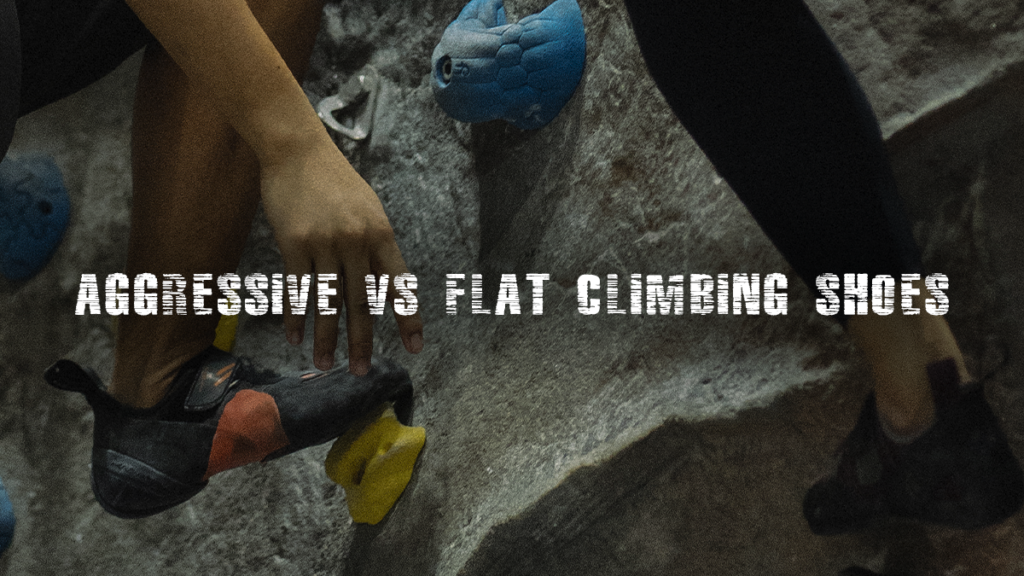Whether you’re a brand-new climber looking to trade out those gym shoes for a pair of your own or a more experienced climber wanting to switch up your style, choosing between aggressive and flat shoes can be intimidating. This article will outline some pros and cons of both types of shoes and suggest some critical areas to consider when making this decision.
Flat v. Aggressive
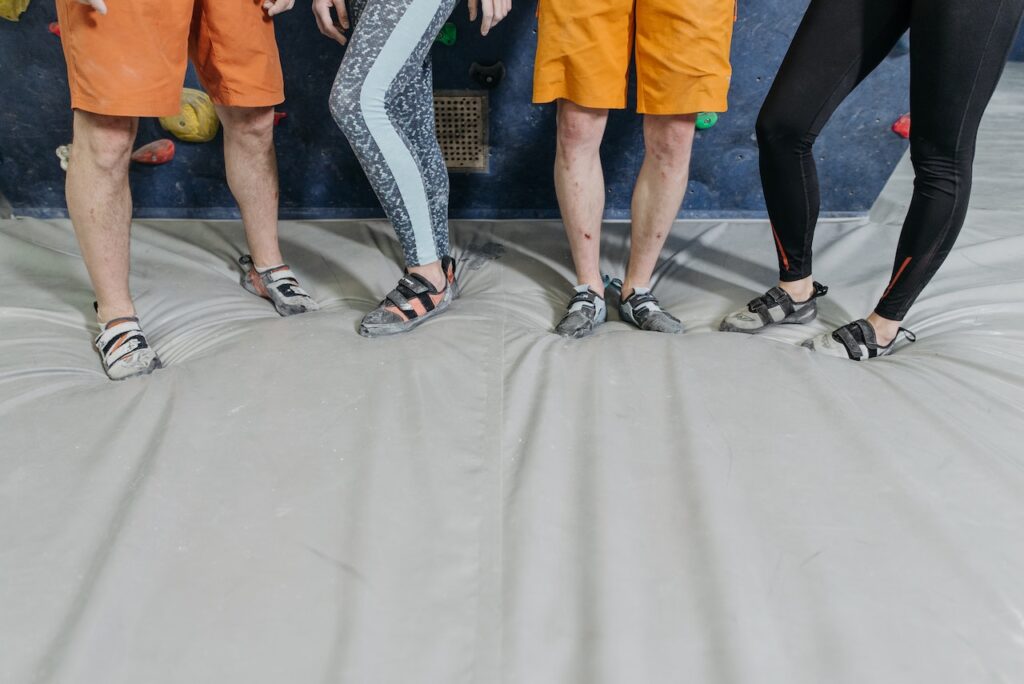
As the name suggests, flat shoes have less of an arch in their soles, and less pointed toes than aggressive designs. Flat shoes’ primary advantage is how comfortable they are. Experienced climbers often utilize flat shoes as warm-up shoes or for those climbing days they know will be extra long. While there are many flat shoes explicitly designed for neutral fits, comfort, or effortless slip-on slip-off style, there are also flat shoes that offer a little more structure to your arch and toe point while remaining comfortable. The downsides of flat shoes are that they make more advanced climbs and techniques more difficult–the non-pointed tips of flat shoes tend to slip off smaller holds and angled terrain like overhangs.
On the other end of the shoe spectrum, aggressive shoes will appear more curved and shaped along the arch, heel, and especially toes. These shoes are usually much more snug in how they fit your foot shape and stiffer in material, especially along the arch. Because of these design factors, aggressive shoes can be uncomfortable for extended periods or stay in between climbs. Despite the discomfort, many climbers opt for aggressive shoes because of the edge they offer for precision-heavy skills. Aggressive shoes are superior to certain terrains like steep faces, overhangs, and roof climbing. Like flat shoes, aggressive shoe designs range in features and fit, offering options for climbers who want a little extra sharpness without sacrificing all the feeling in their feet.
Climbing Intentions
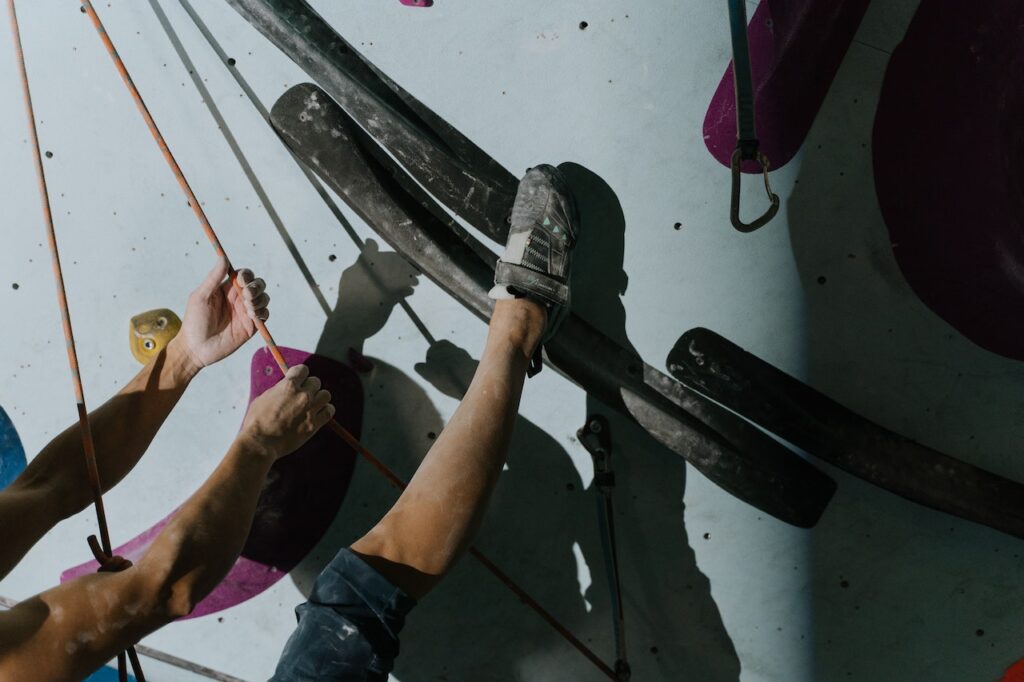
When considering your first or next pair of shoes, it can be helpful to consider the climbing you plan on doing and what you want to get out of your sessions. Are you determined to improve your route grade by learning new and challenging techniques on more difficult terrains in the coming months? If yes, a more aggressive shoe is likely for you. If you’re instead envisioning long days at the gym, hanging out with friends, or meeting new climbers while still getting some sends in, a flatter, more neutral shoe will keep you climbing more comfortably!
If you’re somewhere in the middle and enjoy spending long hours at the gym but are still trying to nail those more challenging techniques and routes, going with an aggressive shoe can be a preferable investment toward those climbing goals. You can opt for a more mildly aggressive style or take extra consideration of comfort when comparing shoes to help find a shoe that offers a balance of comfort and technical advantage.
Skill Goals
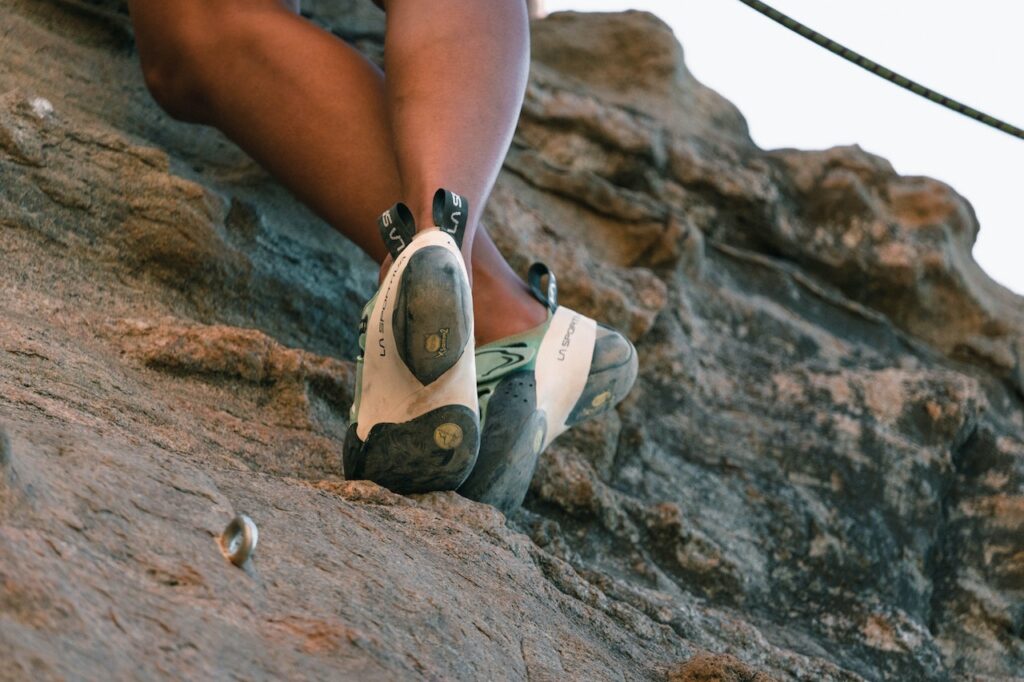
Your goals can also play a large part in the decision between your next pair of aggressive or flat shoes. Flat shoes may fulfill your needs if you’re a newer climber and know you have a lot of skill and strength to gain before hitting those overhung routes or opting for those precision-required moves. Flat shoes can give you a better feel for your climbing preferences while you learn and attempt new moves and techniques. You’ll be able to grow and progress in comfortable shoes–something that can make all the difference when first getting into the groove of climbing.
However, remember that flat shoes will become a hindrance at a certain point in your climbing progression. Consider a more aggressive shoe if you’ve progressed far enough in your climbing that you’ll soon be attempting route grades that require precision on smaller holds, steeper terrain, or precision-heavy skills like edging or heel hooks.
Health
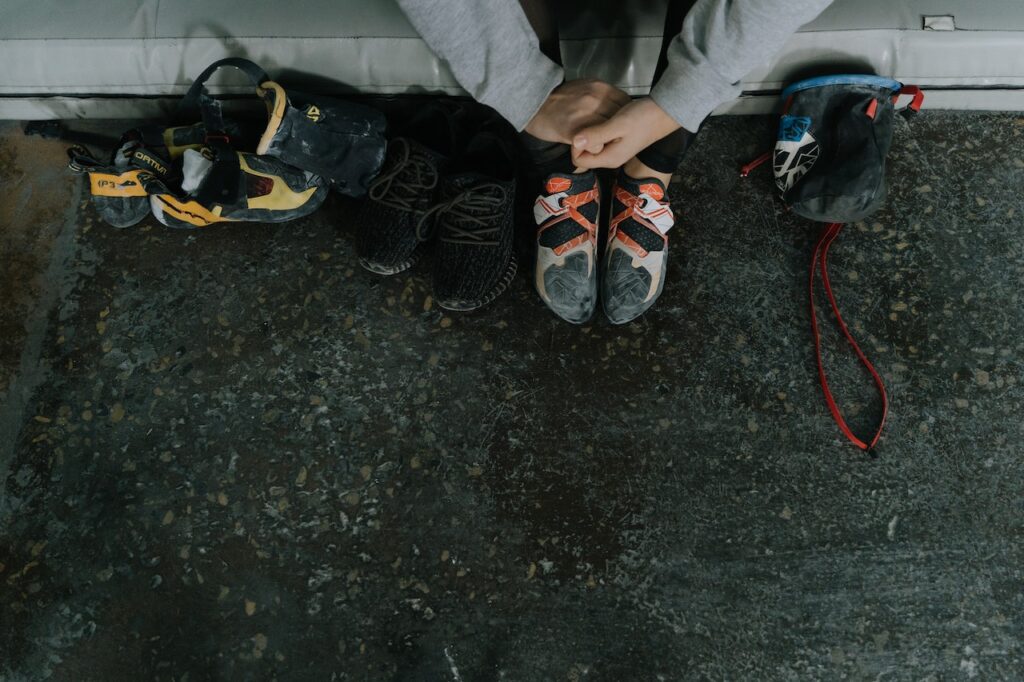
The last thing we’ll touch on is the well-being of your feet- an especially relevant thing to consider if you are a new climber still building those super solid and mega-calloused toesies.
When you first begin climbing, it will be evident how critical your feet are to success. As soon as you climb in shoes that are too tight or aggressive for you, you’ll understand how detrimental the pain and cramping of poorly fitting gear can be to your climbs and your desire to keep climbing.
A massive pro of the pointed tips on aggressive shoes is the power it allows your toes to harness. Having your toes in a pointed position means you can focus more precision and force into one place when placing your feet or pushing off a foothold position. However, it can be painful and strenuous for your body when your feet are not used to this position or have yet to gain the strength and skill needed for this movement. In trying to compensate for the discomfort while still trying to execute skills, developing poor or unfavorable techniques in your movement and technique is easy. Instead of plunging into an overly aggressive shoe, building your way up to this gear style can offer a much more comfortable and healthier climbing experience.
